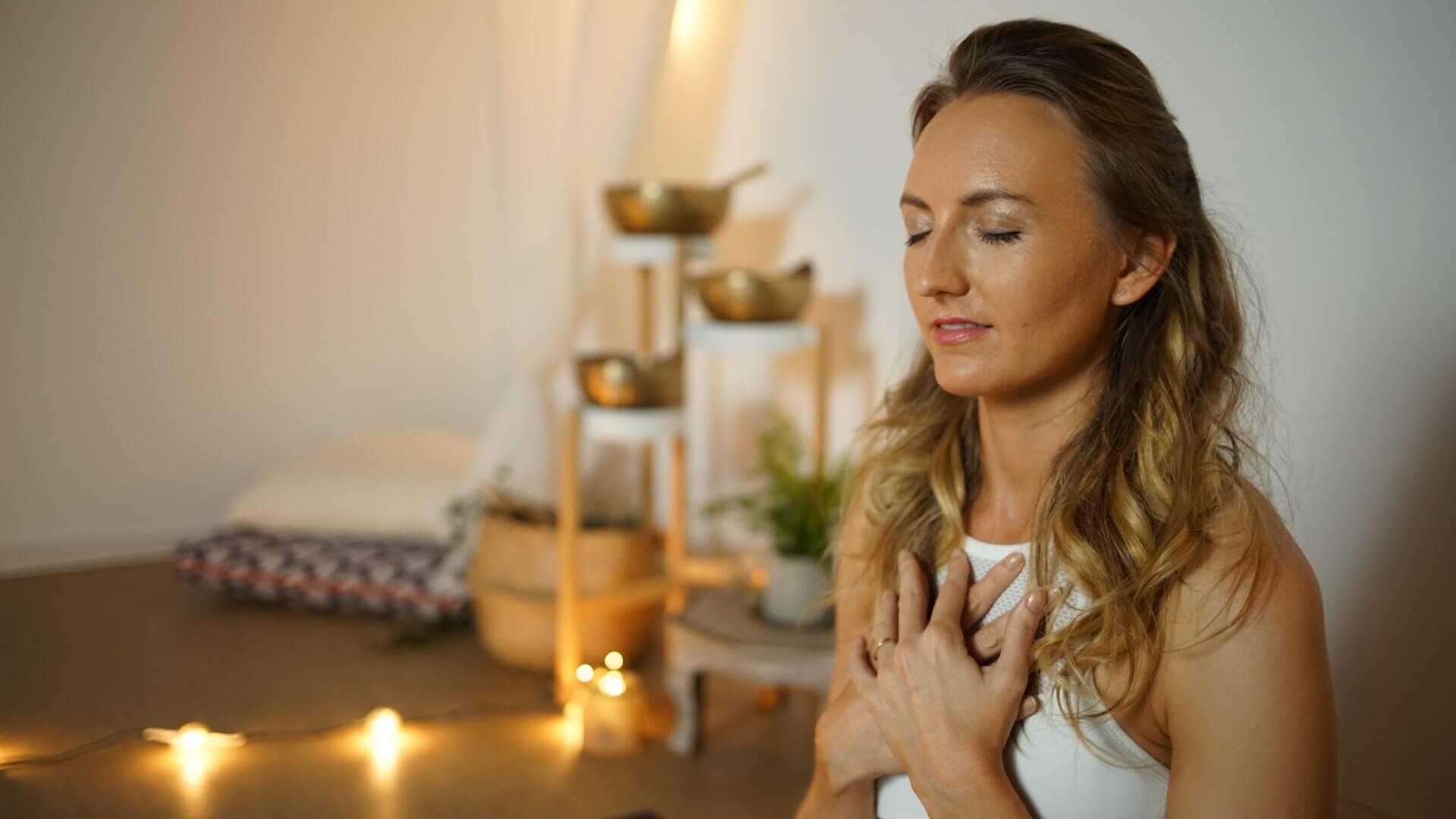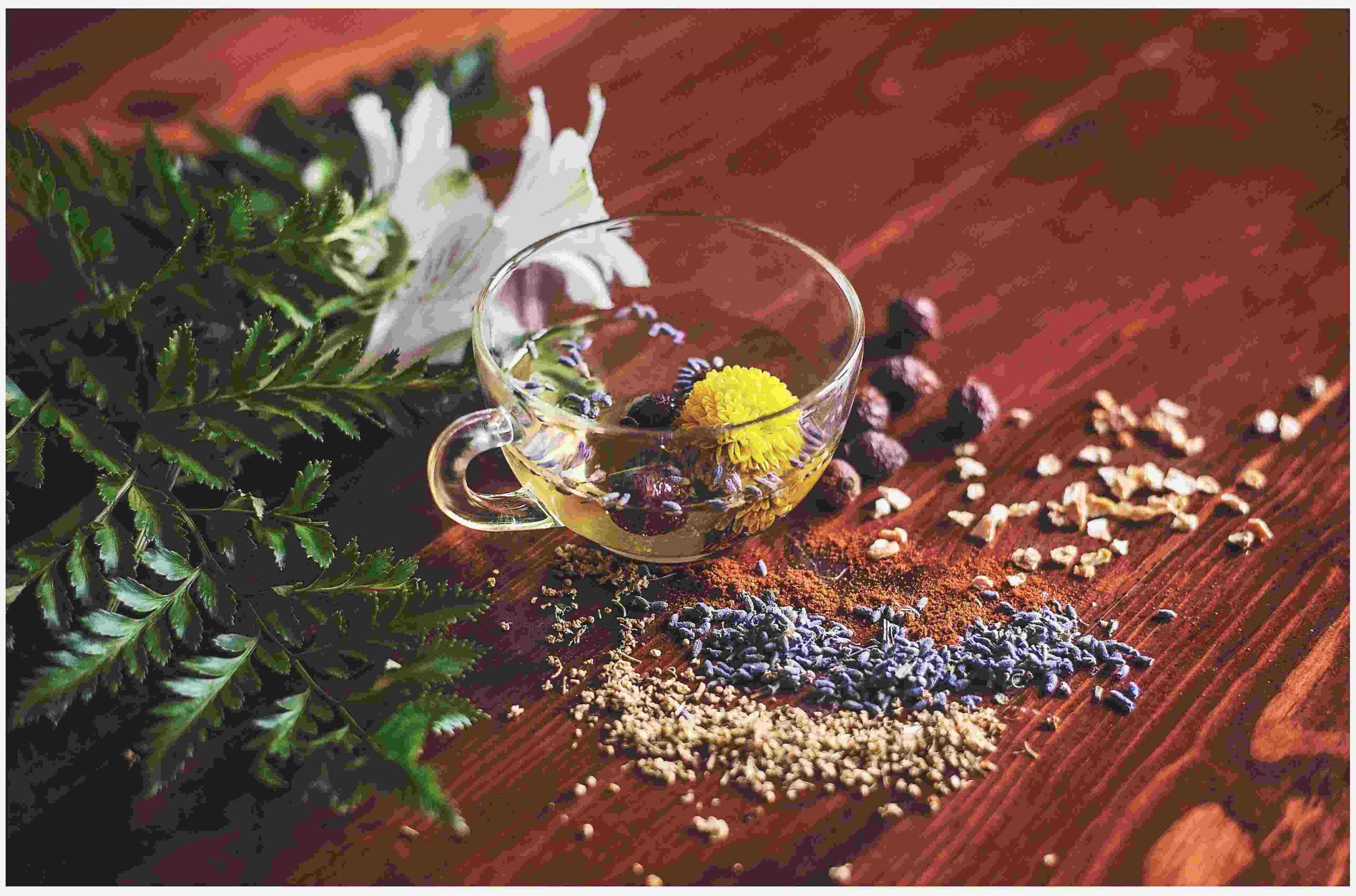Did you know yoga has a sister?!
Her name is Ayurveda. When you pair yoga and Ayurveda together, as a compliment to western medicine, you can become your most radiant, glowing, full self, both on and off the mat.
Sounds too good to be true?
I promise, it’s not.
At its core, Ayurveda is about creating balance in the body, mind, and spirit with a focus on your individual mind-body constitution.
The first step is to get to know your personal ayurvedic constitution – a.k.a. your dominant dosha.
Let me introduce you to this life-changing ancient knowledge and how to balance doshas for a calmer, more intentional life…
Meet the Ayurvedic Doshas
Ayurveda, the ancient Indian system of holistic medicine, has been helping people like you and me achieve harmony and balance for centuries.
So, let’s get started with the foundation of Ayurveda…the doshas.
What are doshas?
There are three primary doshas – the three elements believed to be present in a person’s body and mind: Air (Vata), Fire (Pitta), and Earth (Kapha).
Each dosha has its own set of characteristics:
Fun fact: We all contain a mixture of all three doshas, but one is usually dominant.
Knowing if you are Air (Vata), Fire (Pitta), and Earth (Kapha) dominant gives you more awareness of your habitual tendencies, likes, dislikes, desires and aversions, and how to correct imbalance and soothe your nervous system.
Understanding your individual needs through these three Ayurvedic body types helps you stay healthy, and live your best life possible by tuning into your unique essence. Pretty cool, right? All your need to do is learn how to balance doshas.
Let me introduce you to Vata, Pitta, and Kapha…
Introduction to the 3 Doshas: Vata, Pitta & Kapha
Vata dosha
Air dominant: Energetic, creative, lively
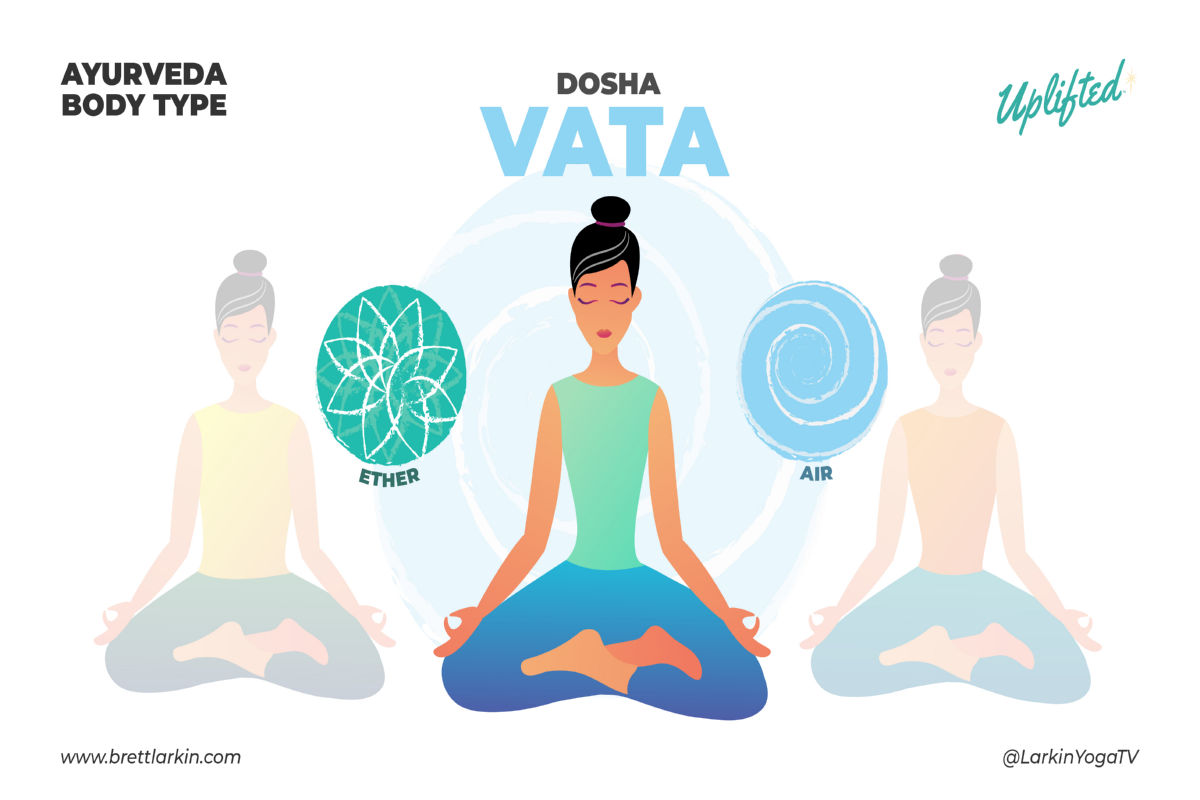
Anyone with a dominant Vata dosha tends to be creative, filled with ideas, and full of mental stimulation. Their energy is light, fluid, and dynamic. This body type is ruled by the element of Air.
Physically,Vata people are likely to have a smaller build, dry skin and hair, cold extremities ( a.k.a. chilly hands and feet), and they might struggle with sleep and anxiety. With energy that comes in sudden bursts, it can quickly be followed by a sudden crash. Emotionally, their mood might quickly shift, especially if there is excess Vata present.
Vata individuals are often outstanding at starting projects, but not the best at finishing them. Organization is not their favorite thing. They are often creative, spontaneous people who enjoy being around others and have an innate admiration for art, music, and nature. At their best, Vata individuals are massively talented creatives who are outgoing and always up for an adventure!
Signs of Vata Imbalance
Vata imbalances can manifest in many ways, but it usually looks like feeling paralyzed by a million ideas, confused on next steps, inability to focus, or feeling irrational, dramatic, and hyper-sensitive. Healthy food might be the last thing on your mind as they get stuck in what the right next step is.
The main Vata dosha symptoms of imbalance look like:
- Anxiety and Overwhelm. When excess Vata is present, they might feel anxious and overwhelmed, which blocks them from moving forward.
- Insomnia. If a Vata‘s head is spinning with ideas, insomnia might come for a visit and sleep may be hard to find. Plus, you might feel extra cold as you’re trying to get some rest.
- Perfectionistic. A Vata might not finish a project until it’s perfect, which means it never gets finished. Perfectionism is a top sign of vata imbalances.
Pitta dosha
Fire dominant: Strong willed, determined, decisive
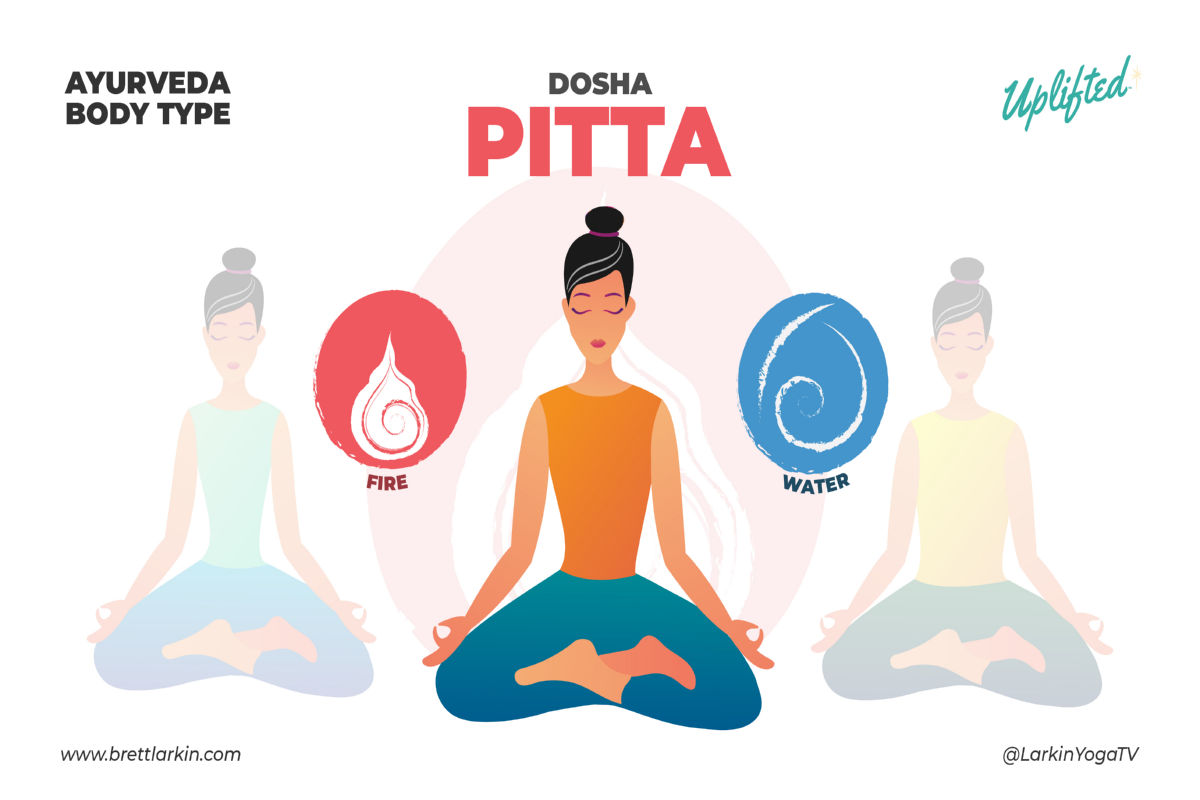
Pitta types are ruled by the element of Fire. Their energy is usually fiery, intense and super focused. A Pitta is typically very productive and ambitious at work and ready for vigorous exercise in the gym.
Physically, Pitta types are likely to have a medium build, quick digestion, and a big appetite for food, sex, and life. They’ll rarely be cold with all that heat, and food is usually a quick bite on the go. They are go-getters, decision-makers, and strong public speakers. Emotionally, they run hot. Patience doesn’t come easy and they have a tendency to easily get frustrated with others.
Pitta individuals are naturally passionate, confident, and successful people who enjoy a good challenge. They are efficient, methodical, and organized
Signs of Pitta Imbalance
Pitta imbalances show up in a variety of ways, but they usually look like having trouble slowing down, getting enough sleep, or stepping away from work. These are all signs of excessive heat.
The main Pitta imbalances look like:
- Frustration and Irritability. A Pitta out of balance might resemble a fire-breathing dragon: angry, judgmental, and controlling.
- Impatience. Since they move fast, difficulty waiting is a sign of imbalance.
- Needing to control (everything). When they become a control freak, it means there’s too much fire that’s in need of some balancing.
Kapha dosha
Earth dominant: Steady, stable, with high stamina.
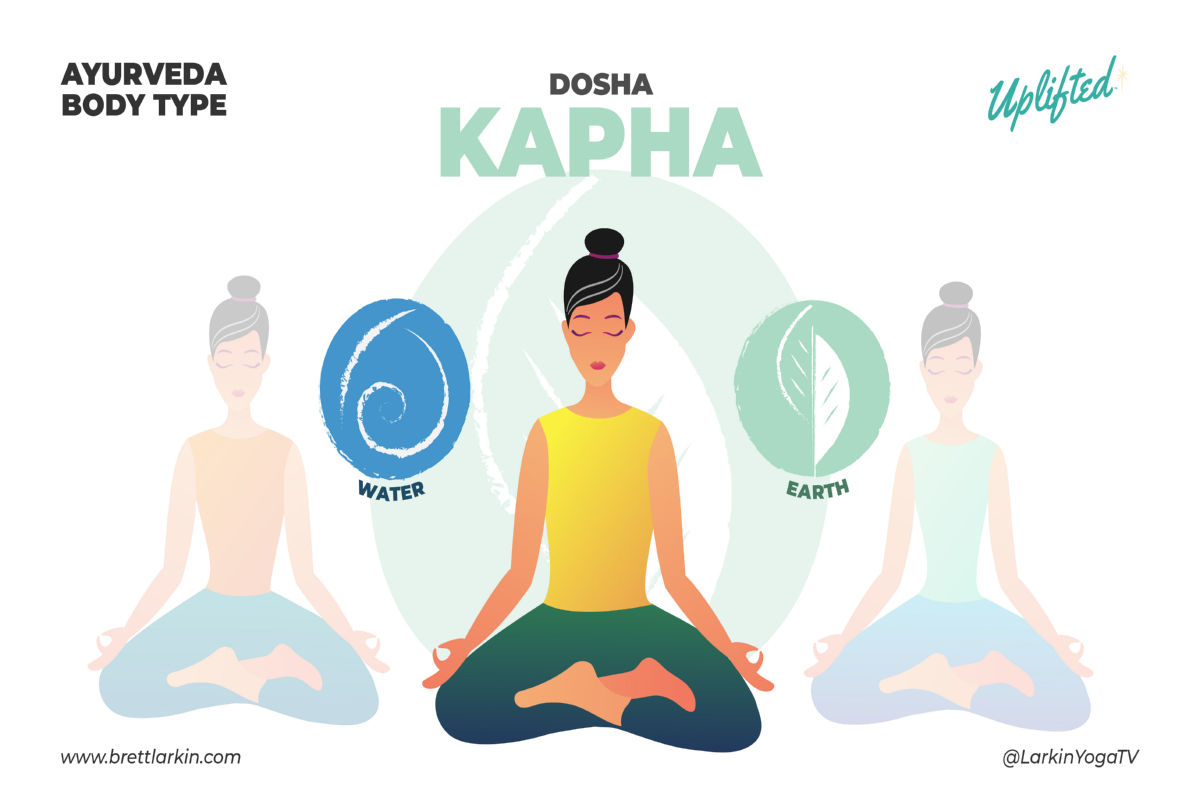
Kapha is ruled by the element of Earth. Anyone with a dominant Kapha type tends to be slow, stable and grounded. They love to chill at home and move at their own pace. Kaphas are reliable, level-headed, and nurturing.
Physically, they’re likely to have rich oily skin and hair, a thicker or more substantial build, and large, radiant eyes. Emotionally, they are kind, loving, and natural caretakers.
Kapha individuals are usually very loving, affectionate people who create close relationships and seek stability. They value relaxation over activity. At their best, Kaphas are patient and understanding.
Signs of Kapha Imbalance
An imbalance of Kapha can look like increased lethargy, a decrease in physical activity, and watching TV for long periods of time while munching on not the healthiest foods.
The main Kapha imbalances look like:
- Procrastination. When there’s too much Earth, it’s easy to put off action and keep pushing your to-do list until tomorrow.
- Exhaustion. An imbalanced Kapha might find themselves increasingly tired, no matter how much rest they get.
- Lack of motivation. Feeling a lack of motivation is common in Kapha types and can lead to more lethargy and procrastination, becoming a vicious cycle.
Balancing the Doshas: Restore Balance in Your Vata, Pitta, & Kapha
When it comes to balancing your doshas, the goal is not to bring all three elements into equal balance, like three equal thirds of one part. The best way to restore balance is to find the combination of these three elements that allow you to operate as your most authentic, joyful self.
The first step is to understand which dosha is most dominant within you. I created a quiz to offer you more insight into your Ayurvedic make-up. Take what resonates with you and, as always, trust yourself. Take the dosha quiz now!
Once you know your dominant dosha, you’re now ready to find balance to promote your health, on the yoga mat and in your daily routine.
Balancing Vata
The key to balance excess vata is to bring grounding, stability, and calm into your life. Even though your comfort zone is to be in movement and free from restrictions, finding structure will balance vata.
Here are a few ways to balance vata:
- Get organized. Get a planner or use a tool like Asana to map out your daily routine, self care, and even foods you plan to eat. For Vata dosha, finding a way to capture and organize your ideas is crucial.
- Stay warm and calm. As a vata, listen to soothing music before bed and practice mindful activities as you wind down your day. Self massage and adding cooling spices in your diet will help you wind down.
- Nourish your body. Coconut oil, raw honey in your tea, ayurvedic herbs, and even frozen foods can help cool you down and nourish your health. The Vata air element needs proper balance in a suitable diet to promote well being. Avoid foods with air, like carbonated drinks. Practice meditation to soothe racing thoughts.
Balance Pitta
The key to balance excess Pitta is cooling down all that heat. Slowing down in your daily routine and incorporating more cooling foods and activities will help you shine as your best self.
Mostly, to balance out all that fire, you must learn to let go of control and move from doing to being.
Here are a few ways to get in balance:
- Take a moment to nourish yourself. Whenever you can, pause and take a break. Eat foods that are cold and soothing. Avoid heavy foods, dense carbs, and always supply water to your body throughout the day. Even coconut water counts! Your immune system will thank you.
- Practice letting go. Schedule in down time for self care. Avoid vigorous yoga and instead, do some quiet yin while thinking a stabilizing energy thought.
Balance Kapha
The key to balance excess Kapha is to get your body moving and have impeccable boundaries. Instead of always nurturing others, give that same attention back to yourself, your diet, and your health.
Here are a few ways to get Kapha in balance:
- Spice things up. As a homebody, chill is your go-to mode. But to increase vata and add more air and ether into your life, it’s time to try spicy food, wear warm colors, add black pepper and food like bitter melon to your diet, along with coconut oil and warming spices. You want more pitta dosha to fire you up.
- Get moving. Weight gain, slow digestion, and even skin irritation can be issues for Kaphas. Get your blood-pumping and try hot yoga or go for a walk before you binge your favorite show. Make your diet one that promotes your health and your active lifestyle. Weight loss is sure to follow.
Final Thoughts
The cool thing is yoga was always designed to help us balance our doshas, with different poses and techniques aimed at tempering (calming down) or enhancing (amping up) the Air, Fire, or Earth within us. And the even cooler thing is this knowledge can be applied off the mat too.
Understanding how to balance your doshas can help you in every area of your life. To go deeper, join the Uplifted Community or grab my new book YOGA LIFE to learn more.
Next Steps
- If you’re interested in practical kriya yoga as a way to improve your daily life and relationships, check out my Yoga for Self Mastery course.
- Order my Yoga Life book for a practical guide to creating balance in your life through yoga.
- Check out my YouTube channel and find some yoga classes that you can try out for yourself!
FREE Chakra Balancing Audio Track + Journaling Prompts

YOU MIGHT ALSO LIKE
- My Homemade Immunity Tea Recipe For Winter
- How To Do An Ayurvedic Panchakarma Cleanse At Home (Safely)
- Ayurveda Food Combining: The Key to Balanced Digestion
- How To Reduce Body Heat According To Ayurveda
- Types Of Agni In Ayurveda And How To Balance
- How To Balance Doshas And Step Into Your Powerful Self
- The Eight Branches Of Ayurveda: Guide To A Happy Life
- Yoga for Vata Dosha: Practice Poses and Tips
- Yoga for Pitta Dosha: Practice Poses and Tips
- Yoga for Kapha Dosha: Practice Poses and Tips
- Jal Neti Kriya: The Best Thing You Can Do To Clear Your Head Right Now
- My Exact Ayurveda Morning Routine For Yogis
- The 6 Stages of Disease in Ayurveda
- Discover Your Ayurvedic Constitution and Balance Your Mind, Body, and Spirit
- Understanding the Basic Principles of Ayurveda for Yogis
- 3 BEST Ayurveda Schools for a Holistic Ayurvedic Certification
- What Are Nadis? Your Guide to Energy Channels In Your Body.
- What Is An Ayurvedic Diet? Foods For Your Doshas
- A Day Around the Doshas: What I Learned When I Followed the Ayurvedic Clock


